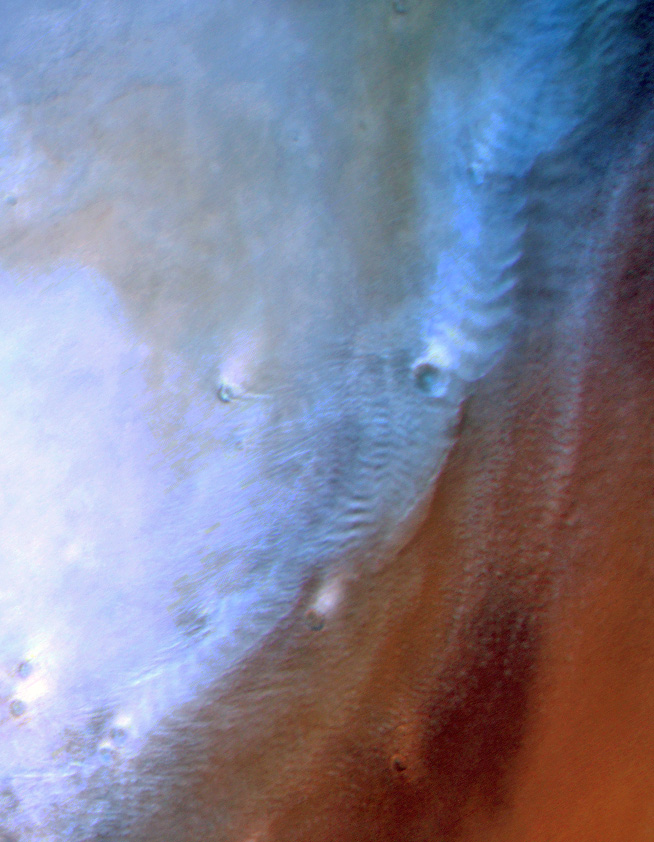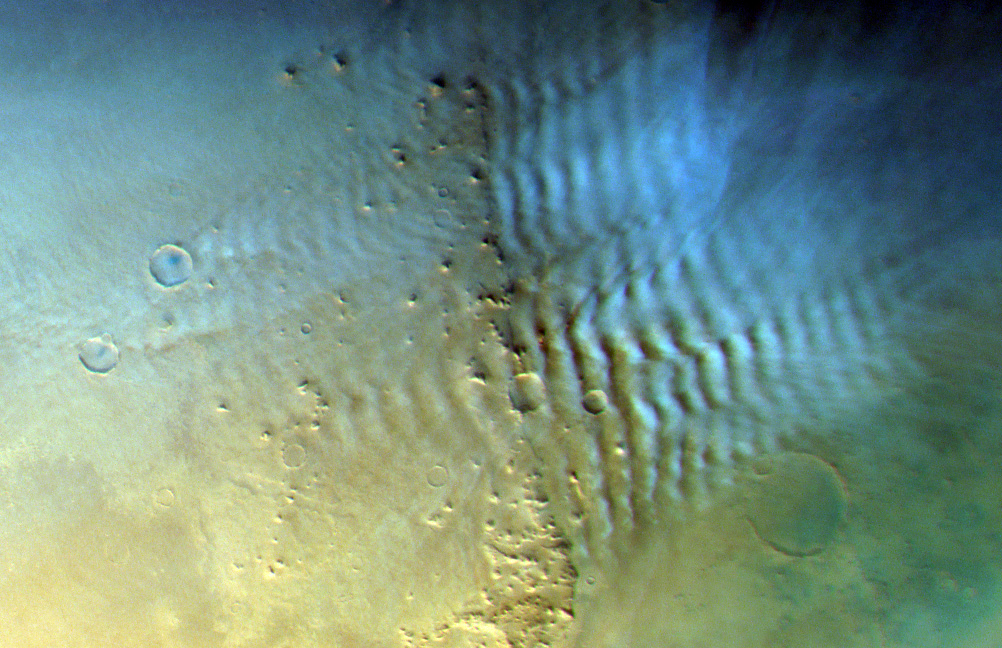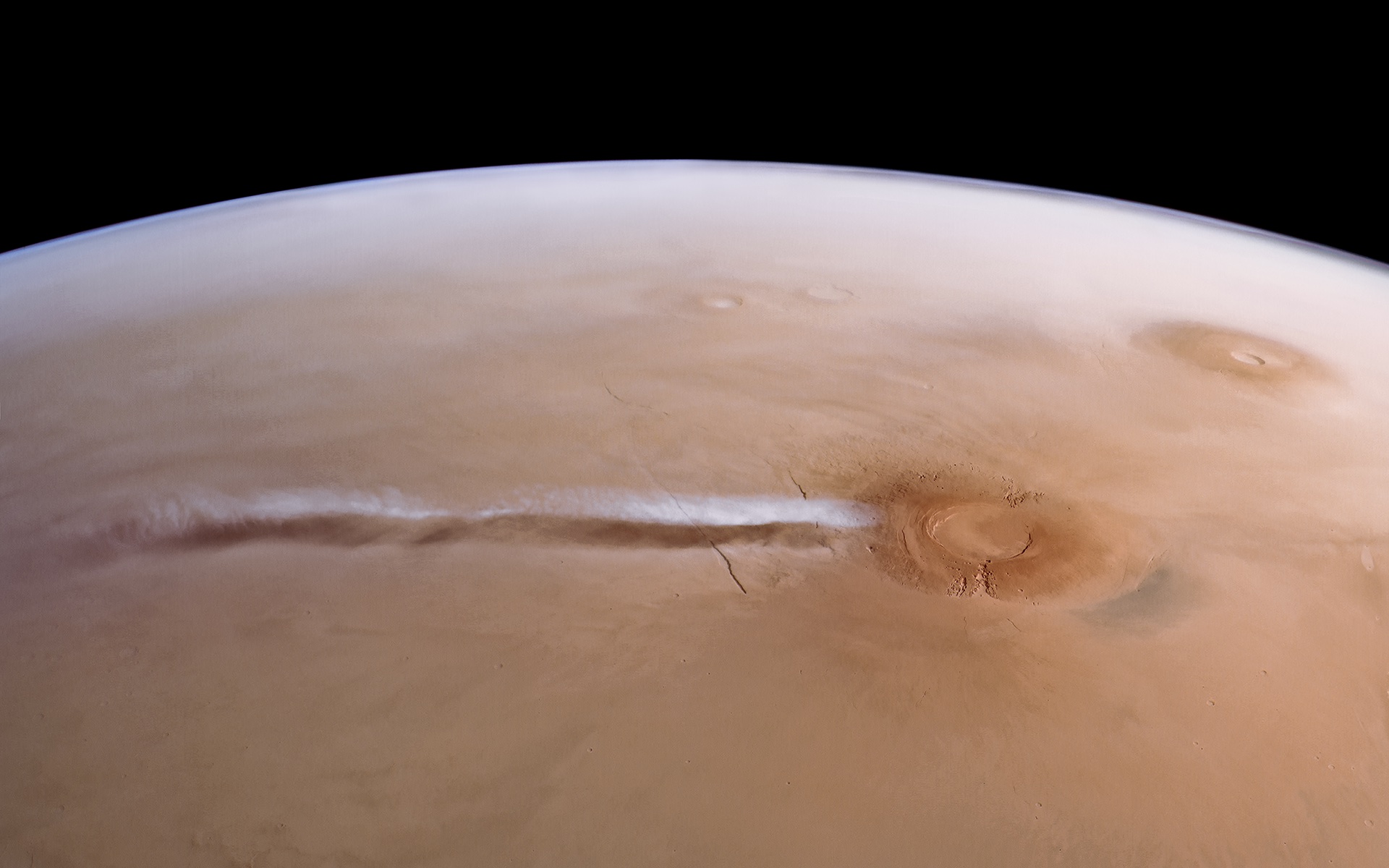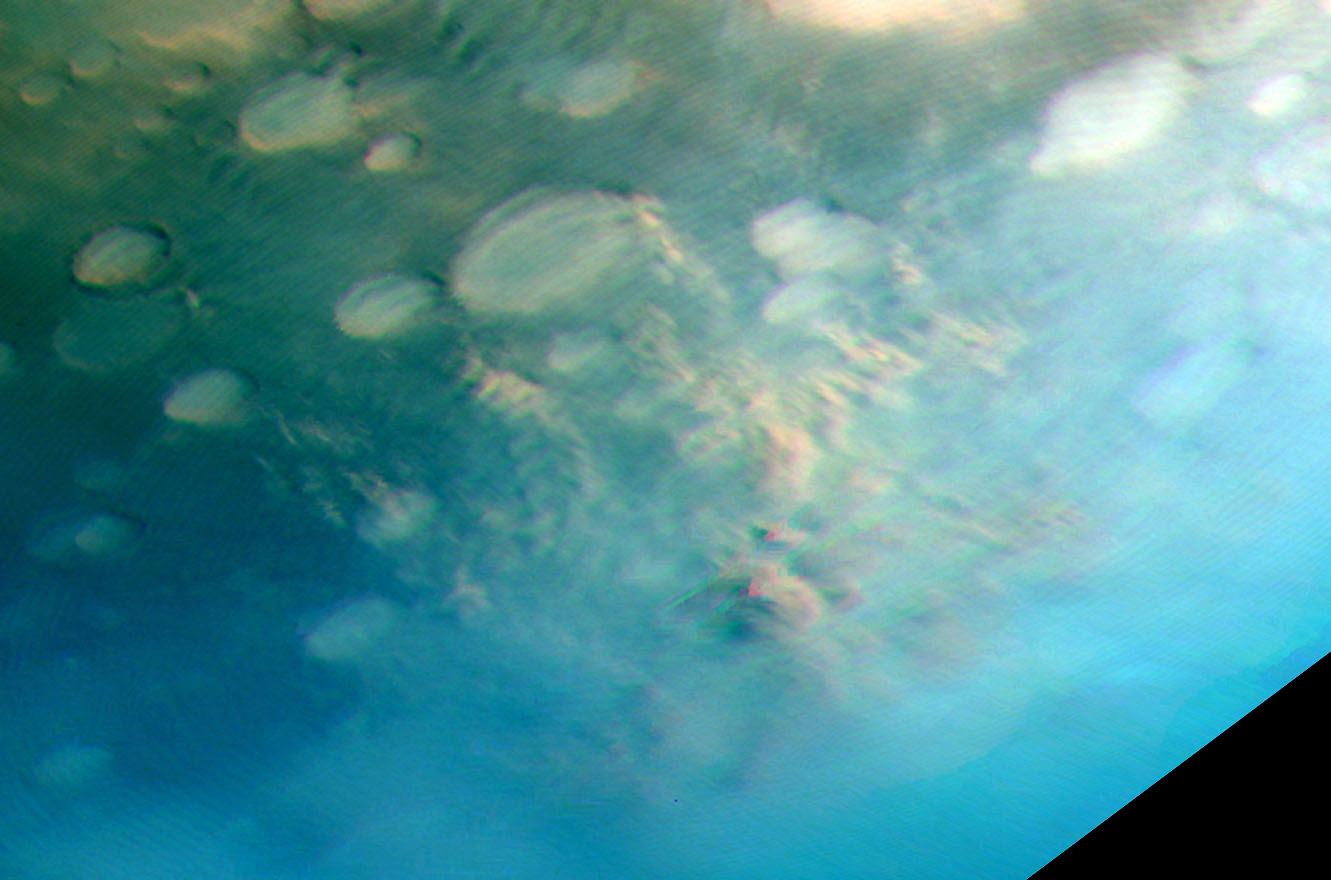Best-ever 'Cloud Atlas' of Mars showcases stunning cloud patterns (photos)
"Clouds on Mars are just as diverse and fascinating as those we see in our skies on Earth."

Scientists have unveiled the most extensive map of clouds on Mars ever created.
For the past 20 years, the European Space Agency's (ESA) Mars Express spacecraft has photographed Martian clouds and storms, documenting how they shape into striking patterns despite the planet's very thin atmosphere. This summer, scientists at the German Aerospace Center pieced together thousands of images taken by a camera on board the spacecraft into a "Cloud Atlas" that takes you on an immersive virtual tour of Mars' clouds.
Understanding how and where on Mars these clouds form is crucial to deciphering their impact on the planet's climate. The new catalog documents a variety of cloud patterns, including some unlike anything seen on Earth.
"Clouds on Mars are just as diverse and fascinating as those we see in our skies on Earth," Daniela Tirsch, a planetary geologist at the German Aerospace Center, said in a statement. She presented the new atlas Sept. 10 at the Europlanet Science Congress in Berlin. "We also see impressive dust clouds that can spread hundreds of kilometers," Tirsch said — a phenomenon we don't experience on Earth."
Related: Mars' clouds are strangely Earth-like, despite wildly different atmospheres
Cloud "streets" spread across northern lowlands
Unlike Earth's liquid-water clouds, Martian clouds are primarily carbon dioxide because moisture in the planet's air is so low, all of it would add up to a layer thinner than a strand of hair. Sometimes, dust and water vapor also blend in, helping craft linear rows of clouds like those spotted hovering above a vast swath of lowlands near Mars' north pole known as Vastitas Borealis.
The Mars Express spacecraft imaged similarly extensive cloud streets elsewhere on Mars, including around Olympus Mons, Arsia Mons and several other volcanoes in the Tharsis region near the equator. "While they resemble cumulus clouds on Earth, they are formed under different atmospheric conditions," Tirsch said in the statement.
Breaking space news, the latest updates on rocket launches, skywatching events and more!
A remarkably long cloud over Arsia Mons
A peculiarly long water-ice cloud has appeared so many times over Arsia Mons, the southernmost of three volcanoes near the Martian equator, that in 2020, scientists named it the Arsia Mons Elongated Cloud (AMEC).
The elongated wisp of water ice has formed every spring on southern Mars, and it becomes visible in the early morning and lasts until noon every day for at least 80 days. Within hours, the cloud spreads at a mind-boggling speed of 370 mph (600 km/h). At its largest, it spans more than 1,100 miles (1,800 kilometers) long and 90 miles (150 km) across, stretching from Arsia Mons all the way to the more famous Olympus Mons, the largest volcano in the solar system.
Although the AMEC repeatedly forms over a volcano, scientists have long ruled out that it's any sort of volcanic event, because spacecraft never detected spikes in methane, sulfur dioxide and other gases known to spew from volcanic eruptions. Instead, the cloud results from the way local winds interact with the surface features. It forms when water-ferrying winds are nudged up the flanks of Arsia Mons to higher, much cooler altitudes, where some of the moisture in them condenses.
"Understanding this cloud gives us the exciting opportunity to try to replicate the cloud's formation with models — models that will improve our knowledge of climatic systems on both Mars and Earth," Agustin Sánchez-Lavega, a professor at the University of Basque Country in Spain who co-authored a 2020 study explaining the cloud's dynamics, said in a previous ESA statement.
Wind-lifted dust clouds left hanging in the air
The image above shows a striking cloud pattern sculpted by gravity waves, which are common ripples in both Mars' and Earth's atmospheres caused by air trying to restore itself to equilibrium. On Mars, they are typically spotted at midlatitudes in the winter; NASA's Curiosity rover recorded the first ground-based views of such clouds back in 2017.


A special type of gravity cloud is a lee wave, a recurrent ridge-like cloud pattern that builds on the downwind side of mountains across Mars. Depending on the shape of its obstacle, this type of cloud takes on slightly different geometries, scientists say.

Sharmila Kuthunur is an independent space journalist based in Bengaluru, India. Her work has also appeared in Scientific American, Science, Astronomy and Live Science, among other publications. She holds a master's degree in journalism from Northeastern University in Boston.



